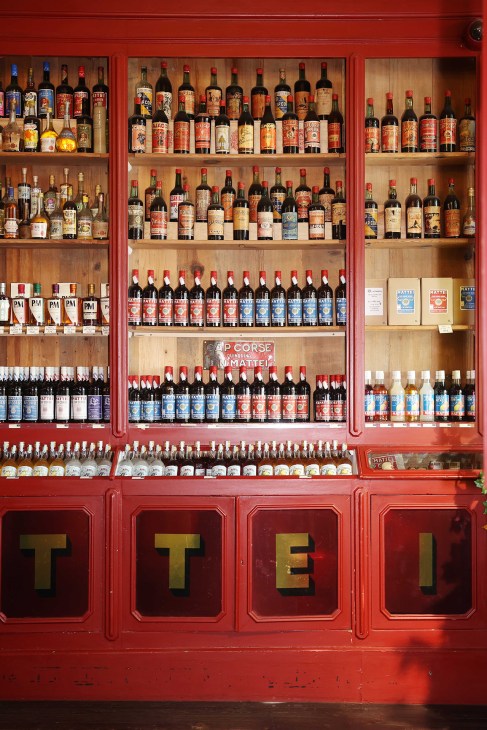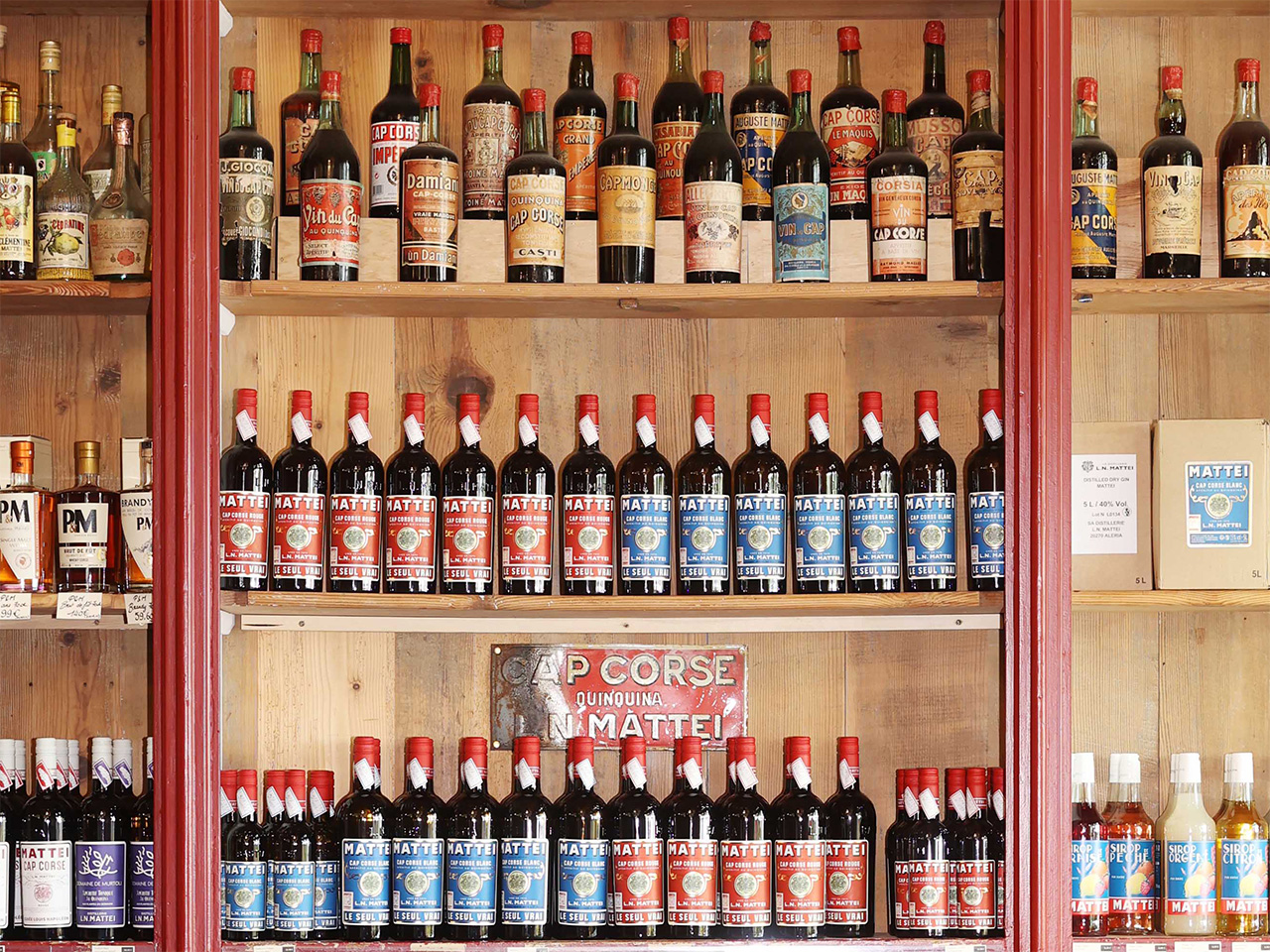After a period of decline, the island’s once-iconic apéritif is experiencing a notable resurgence by looking to the past.
In Jacques Deray’s 1974 film Borsalino & Cie, Alain Delon, the epitome of French cool in his hat and double-breasted suit, takes revenge on his enemies in glamorous locales, where dapper card sharks enjoy generous pours of ruby-red Cap Corse. After decades confined to the dusty shelves of old-fashioned bars on Napoleon’s native island, this Corsican liqueur is spritzing its way back to prominence.
Cap Corse, which comes in white and red variants, is a wine-based drink infused with tree bark, citrus fruit and herbs. LN Mattei, the company that distils it, was founded in the early 1870s. The tipple reached the peak of its popularity during the early 20th century. In the decades after the Second World War, however, it steadily lost its lustre, becoming a drink that mostly appealed to older Corsicans who remembered its glory days.

In 2016, Corsica’s Groupe Boisson Corse acquired LN Mattei and kick-started a new era of expansion. It has gone from producing 80,000 bottles, sold almost exclusively in Corsica, to making 400,000 bottles today, 15 per cent of which are exported.
“Over time, Cap Corse had evolved to emphasise the bitterness of cinchona bark,” says Patrice Gontier Ackermann, LN Mattei’s general manager. “To appeal to a broader audience, we revived the original recipe of our founder, Louis Napoléon Mattei, which balances sweetness and bitterness.” This change was informed by the tastes of the current golden age of mixology but also by the rise of the Aperol spritz, which, in less than a decade, has gone from a Venetian aperitivo to a global phenomenon. (Aperol is now the most valuable brand in the Campari group’s European portfolio.) “We recognised that offering a quirky Corsican alternative had significant potential,” says Gontier Ackermann.
The “Capo Spritz” is now served in bars across the island in large LN Mattei-branded glasses that will look familiar to Aperol fans. Expect to see these gracing a Mediterranean bar this summer. With just 350,000 or so permanent residents in Corsica and near-universal brand recognition on the island, LN Mattei needs to lean hard on exports for future growth. By 2030 it plans to double production to 800,000 bottles, with half sold outside Corsica.
Cap Corse’s resurgence mirrors the island’s rise as a destination, increasingly attracting tourists from beyond France. The number of foreign visitors was up by 6 per cent last year, hitting an all-time high. LN Mattei’s shop in Bastia’s Place Saint Nicolas is an especially strong asset. Established by the company’s founder in 1872, it’s an officially recognised historical landmark. The shop, known for its dark-red open cabinets and exposed stone walls, stocks a wide array of Corsican products alongside the booze.
An alcohol-free version of the apéritif is currently in the works. “That could become an important market for us in the years to come,” says Gontier Ackermann. After long being overlooked, Cap Corse is seeking to shake things up. “If we don’t keep moving, we could disappear.”
